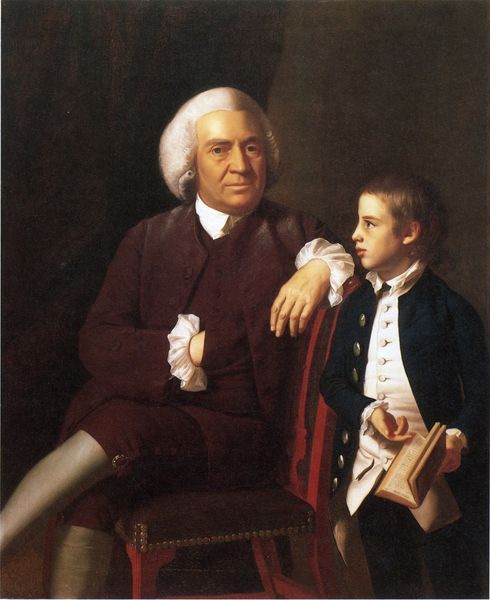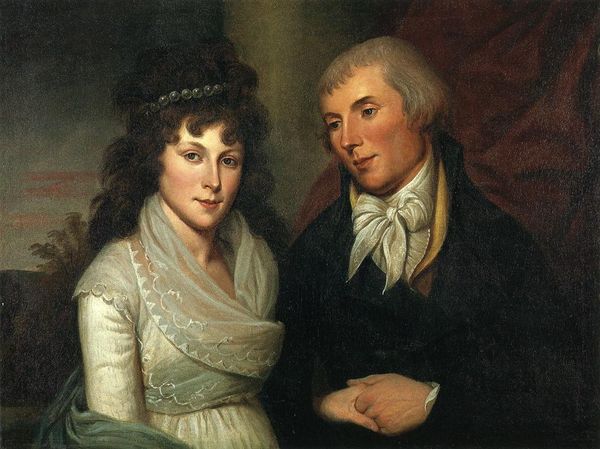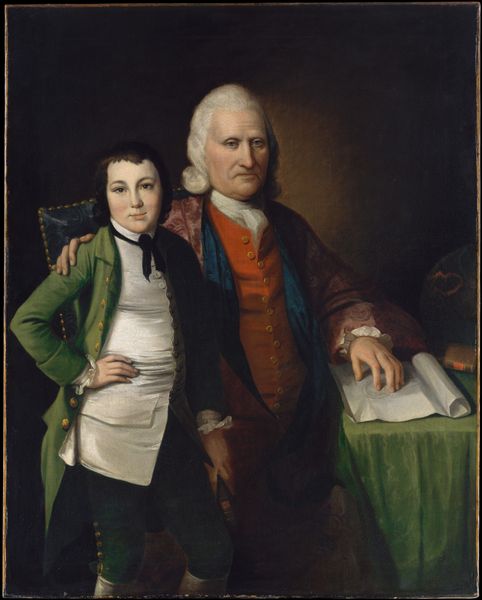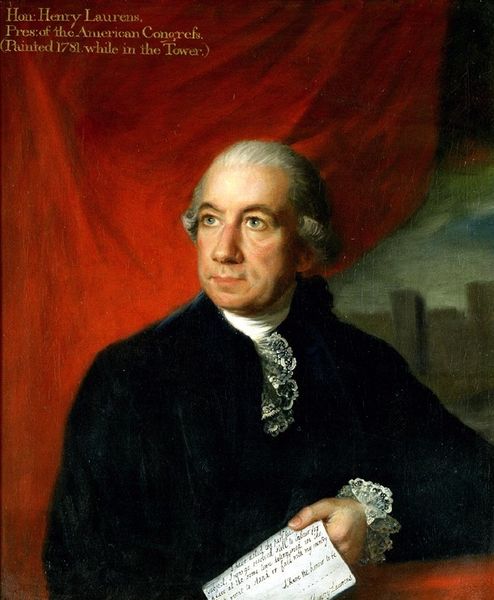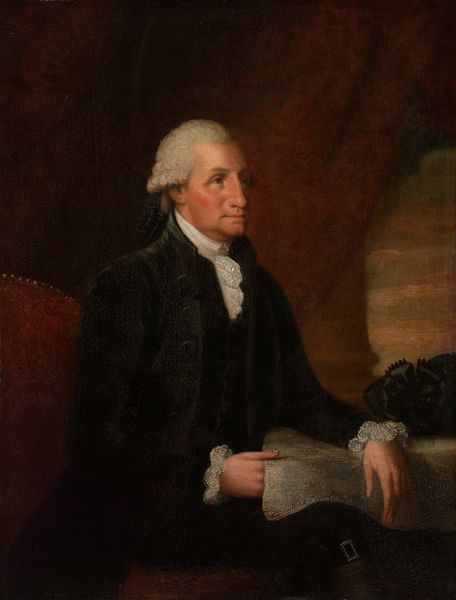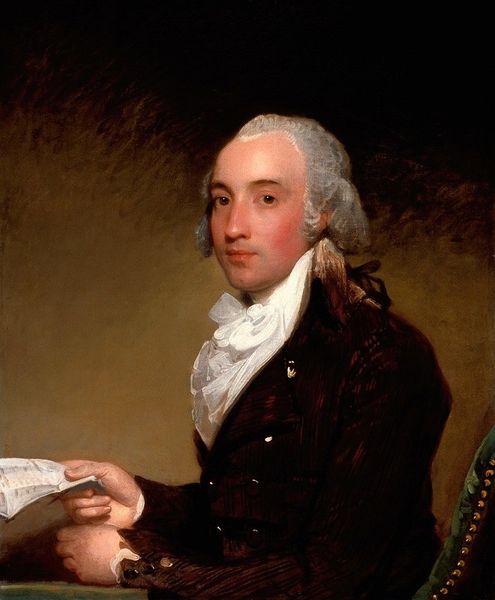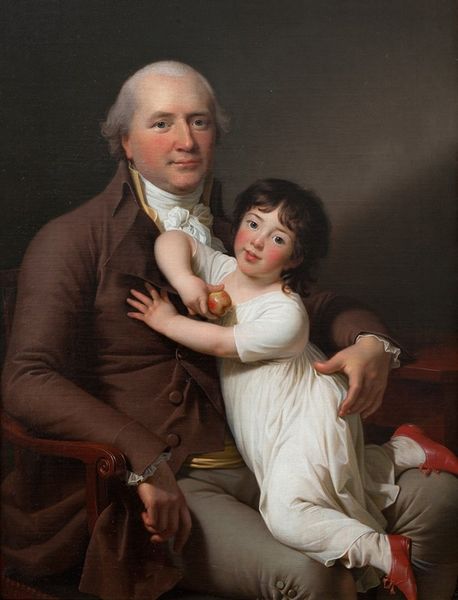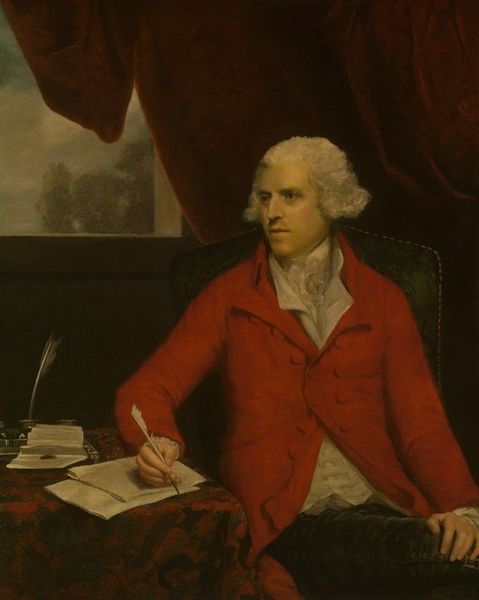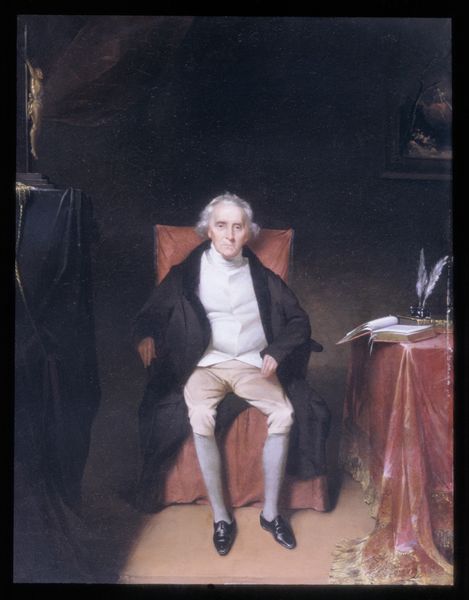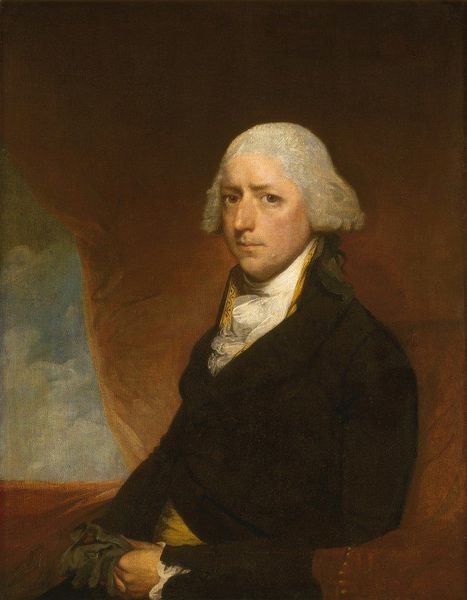
Copyright: Public domain
Editor: Here we have Charles Willson Peale's "Governor Thomas McKean and His Son, Thomas, Jr." from 1787. It's a striking oil painting. There’s something very formal and a little austere about the pair. How do you interpret this work, particularly considering the period it was created in? Curator: It's essential to understand the historical context. Peale, an active participant in the American Revolution, often used his art to reflect and shape political and social values. This portrait, while seemingly straightforward, speaks volumes about power, legacy, and patriarchy within the newly formed nation. Editor: Patriarchy? Can you elaborate? Curator: Look at the composition. The father, Governor McKean, is positioned higher, larger, dominating the space, embodying authority and knowledge. The son, though present, is literally and figuratively in his father's shadow. What does that say about inherited power and the expectations placed on young men of that era? Editor: So, it's not just a portrait; it's a commentary on the social structures of the time? Curator: Exactly! The inclusion of legal documents and the architectural backdrop allude to McKean’s role in shaping the new republic's legal framework. Consider also who was *not* included in these formative processes, specifically women, enslaved people, and indigenous populations. Peale subtly reinforces the dominant narrative, doesn't he? Editor: I see what you mean. It really makes me consider how these power dynamics continue to influence us today. It’s interesting to see how even seemingly simple portraits can tell such complex stories! Curator: Absolutely, and it's through that lens of critical examination that we can truly understand the artwork’s significance beyond its surface appeal.
Comments
No comments
Be the first to comment and join the conversation on the ultimate creative platform.
